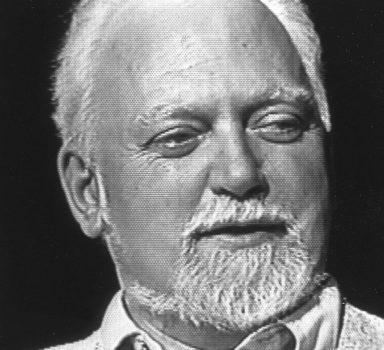
Robert Anton Wilson, a prolific writer and thinker, had a unique and insightful perspective on Timothy Leary’s 8 circuit model of consciousness. He was known for his explorations of reality, psychology, and the nature of human perception, engaged with Leary’s model and expanded upon it in his own writings. His voluminous library of literature covered fiction, autobiographical material, conspiracy theory, magick and drugs. Let’s delve into Wilson’s take on the 8 circuit model and how he built upon it.
Robert Anton Wilson and the 8 Circuit Model
Wilson viewed the 8 circuit model as a valuable framework for understanding human consciousness and its evolution. However, he approached it with a healthy dose of skepticism and a willingness to question and reframe existing models. He believed that Leary’s model, while intriguing, should not be seen as an absolute or definitive map of consciousness but rather as a useful metaphorical tool for exploration.
Metaprogramming
One of Wilson’s key contributions to the discussion of the 8 circuit model was his emphasis on the idea that these circuits are not fixed or static but can be reprogrammed and reconfigured through various means, including psychological techniques, meditation, and even humor. Wilson suggested that individuals have the potential to transcend the limitations of their current circuitry and access higher levels of awareness and functioning.
Reality Tunnels; Belief Systems, B.S.
Wilson also incorporated elements of his own model, known as the “Reality Tunnel,” into his interpretation of Leary’s 8 circuits. The Reality Tunnel is a concept that highlights the idea that individuals perceive and interpret reality through a specific set of beliefs, biases, and cultural conditioning. Wilson believed that each circuit in the 8 circuit model represented a distinct reality tunnel or lens through which individuals view and experience the world.
Sociological B.S.
Additionally, Wilson expanded upon the notion that the circuits are not just limited to individual psychology but also encompass collective and cultural dimensions. He explored the idea that different societies and cultures may be operating primarily on specific circuits, which shape their worldviews and values.
Active Metaprogramming
Wilson’s work also introduced the concept of “metaprogramming” in relation to the 8 circuit model. Metaprogramming refers to the intentional reprogramming and restructuring of one’s belief systems, thought patterns, and behaviors. He suggested that by engaging in metaprogramming practices, individuals could move beyond the limitations of their current circuitry and access higher levels of consciousness and expanded awareness.
In his writings, Wilson often utilized humor, satire, and unconventional approaches to challenge fixed beliefs and encourage readers to explore different perspectives. He believed that a flexible and playful mindset was crucial for navigating the complexities of consciousness and the limitations imposed by reality tunnels.
Overall, RAW’s take on Leary’s 8 Circuit Model of Consciousness was one of exploration, skepticism, and creative reinterpretation. He saw the model as a useful framework for understanding consciousness, but he also encouraged individuals to question and transcend its limitations. Through his own contributions and the incorporation of his Reality Tunnel concept, Wilson expanded the discussion around the 8 circuit model and offered new avenues for exploration in the realm of human perception and consciousness.
Chemical Choices As a Litmus
Robert Anton Wilson’s application of drugs to the 8 circuit model of consciousness was rooted in his belief that certain substances could act as tools for expanding perception, altering consciousness, and accessing different levels of awareness represented by the circuits. Wilson explored the potential of psychedelic substances, such as LSD and psilocybin, in facilitating the activation and exploration of these circuits.
Wilson viewed psychedelics as catalysts for breaking down conditioned patterns of thinking and perception, allowing individuals to temporarily transcend their usual reality tunnels and experience new perspectives. He saw them as tools for challenging established beliefs, expanding consciousness, and accessing higher levels of awareness represented by the later circuits of the model.
Psychedelics
According to Wilson, the use of psychedelics could potentially activate the higher circuits of consciousness, which are associated with expanded awareness, enhanced empathy, and a sense of interconnectedness. These substances were seen as tools for temporarily transcending the limitations of the lower circuits, which are often characterized by survival-oriented behaviors, egoic identification, and conditioned societal programming.
However, Wilson also acknowledged that the effects of psychedelics could be highly subjective and influenced by individual mindset, intention, and set and setting (the psychological and environmental factors surrounding the drug experience). He emphasized the importance of responsible use, proper preparation, and integration of the psychedelic experiences to derive the maximum benefit.
Parochial Chemicals
In addition to psychedelics, Wilson explored the application of other drugs, such as cannabis and stimulants, in relation to the 8 circuit model. He believed that different substances had the potential to influence specific circuits or alter the overall functioning of the nervous system, thereby influencing perception and consciousness.
It is important to note that Wilson did not view drugs as the sole means of accessing higher levels of consciousness or personal transformation. He recognized that various other practices, such as meditation, breathwork, ritual, and cognitive techniques, could also lead to similar states of expanded awareness and growth.
Wilson’s exploration of drugs in the context of the 8 circuit model reflects his broader perspective on the malleability of human consciousness and the potential for individuals to intentionally shape their reality tunnels. He saw substances as tools that, when used consciously and responsibly, could open doors to new insights, expanded perceptions, and the exploration of alternative states of consciousness.
Conclusion
Overall, Robert Anton Wilson’s application of drugs to the 8 circuit model of consciousness highlights his belief in the potential of certain substances to act as catalysts for expanding perception, challenging conditioned patterns, and accessing higher states of awareness represented by the circuits.

